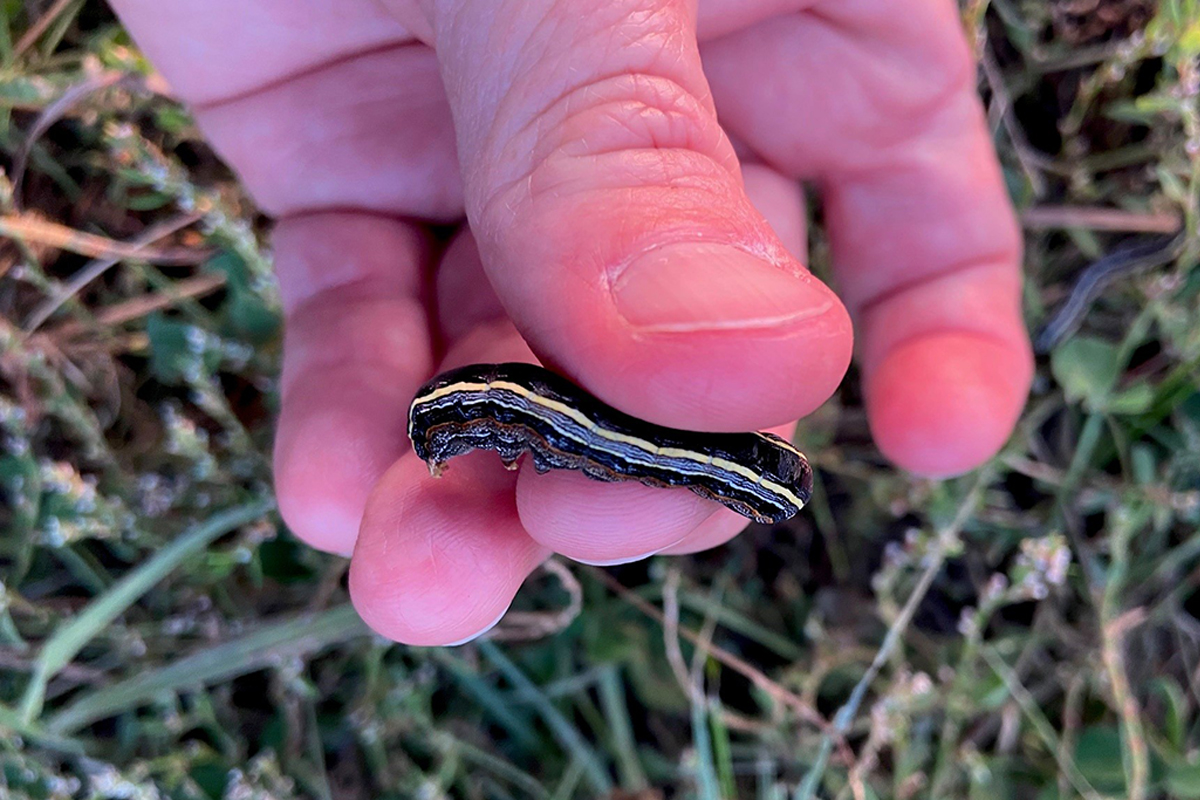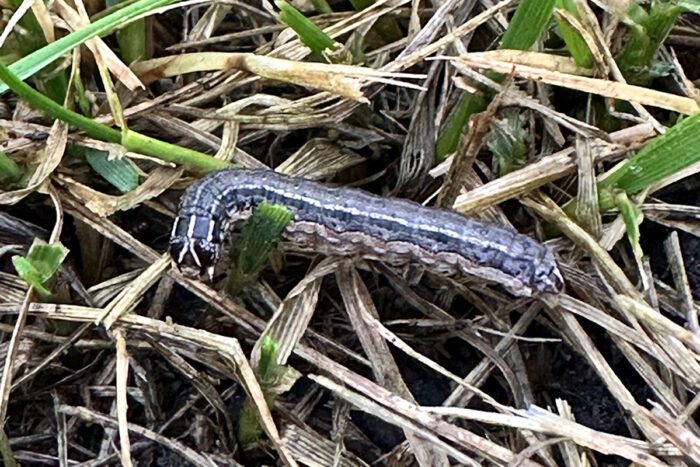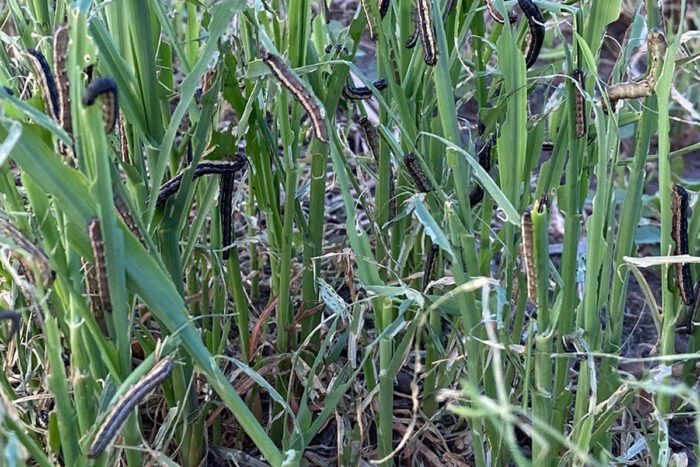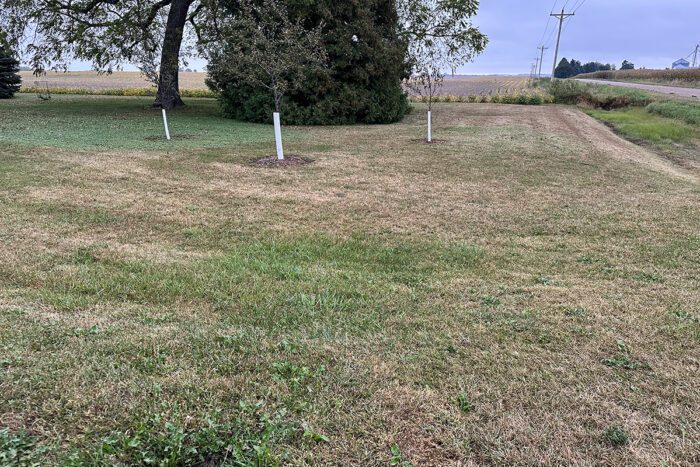By Margaret Smith, PhD
Albert Lea Seed Agronomist
We’ve been receiving reports from northern Iowa for the last week and a half about armyworms feeding in alfalfa, grass pasture, sorghum x sudangrass, and lawns. Farmers are reporting all sizes of the larval, though most are noticing larger larva from 1” to 1.25”. It’s frustrating at this time of the growing season to have to deal with insect pests!
There are two types of armyworms found in the Upper Midwest: True armyworms (Mythimna unipuncta) and Fall armyworms (Spodoptera frugiperda). True armyworms fly into the Upper Midwest during some springs and can complete two life cycles in our area. There is a lot of info on the web, including our website: ‘Armyworms are on the March‘.
Until four years ago, I’d only seen fall armyworms once in my career. The infestation in 2021 was a surprise to a lot of farmers and agronomists—including me!
Fall Armyworms
Reports of feeding at this time are resulting from fall armyworms. Southern and eastern Iowa agronomists were reporting fall armyworms feeding in August this year. They typically complete their life cycle in the later growing season in our region, but reports we’re receiving now are likely from a second generation. Excellent information about identification of fall armyworms and understanding their patterns and behaviors is available from Iowa State: ‘Fall Armyworm‘.
Oklahoma was reporting a first generation of fall armyworms on August 9th this year. See video below.
Activity farther south is a good indicator for us to watch for subsequent generations that may fly north. The video above also helps with identification and shows a comparison with corn earworm. These two insects are fairly distinct, but are sometimes confused. This identification guide may be useful—but—fall armyworms can also can feed on the corn ear.
Growth Cycle
Fall armyworms grow through six instar (larval developmental) stages before finishing feeding and pupating. The University of Kentucky has a complete description of the lifecycle and develop of these interlopers: ‘An Overview on Development Times for Fall Armyworm’. Larva about 0.6” long are only in their 4th instar, 1.0” larva are in the fifth instar, and fully-developed larva in the 6th instar are 1.5” long. Larvae feed voraciously and do the most damage during their growth from 1’ to 1.5”.
Treatment Options
The Iowa State publication, ‘Fall Armyworm‘, shares threshold levels for treatment. For forages:
“Use a sweep net or visually inspect plants for signs of fall armyworm injury or the caterpillars themselves. If larvae are less than ¾-inch long and there are more than 2-3 larvae per square foot, consider harvesting or using an insecticide, depending on the crop, crop condition, and crop use goals. Continue to scout regrowth.”
For conventional growers, several insecticides are available. For organic growers, the only viable option is a spray application of Bt (Bacillus thuringiensis). Once larva reach the 5th instar, they are difficult to kill and growers may opt to ride out the feeding frenzy until larvae complete feeding and pupate.



